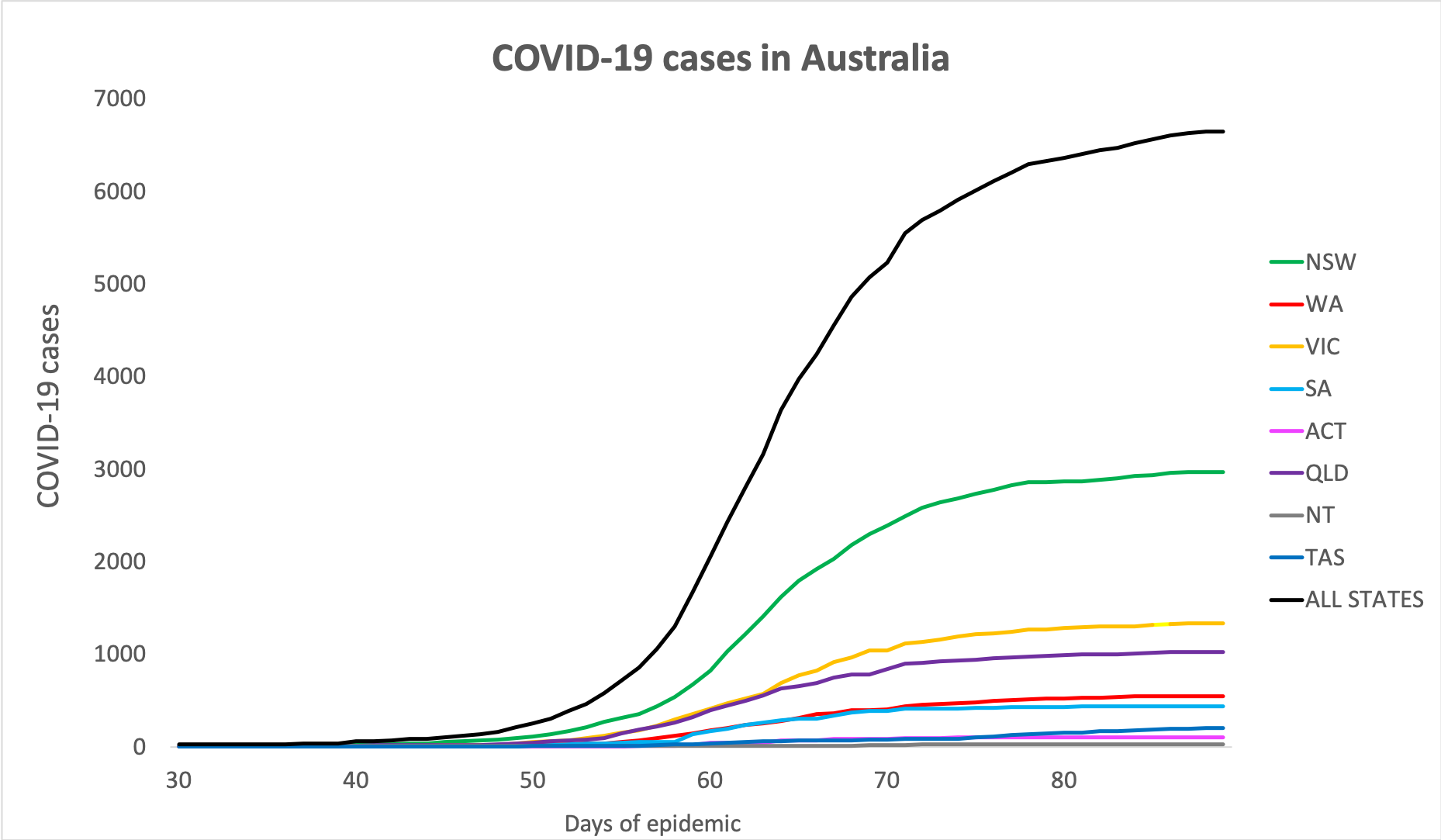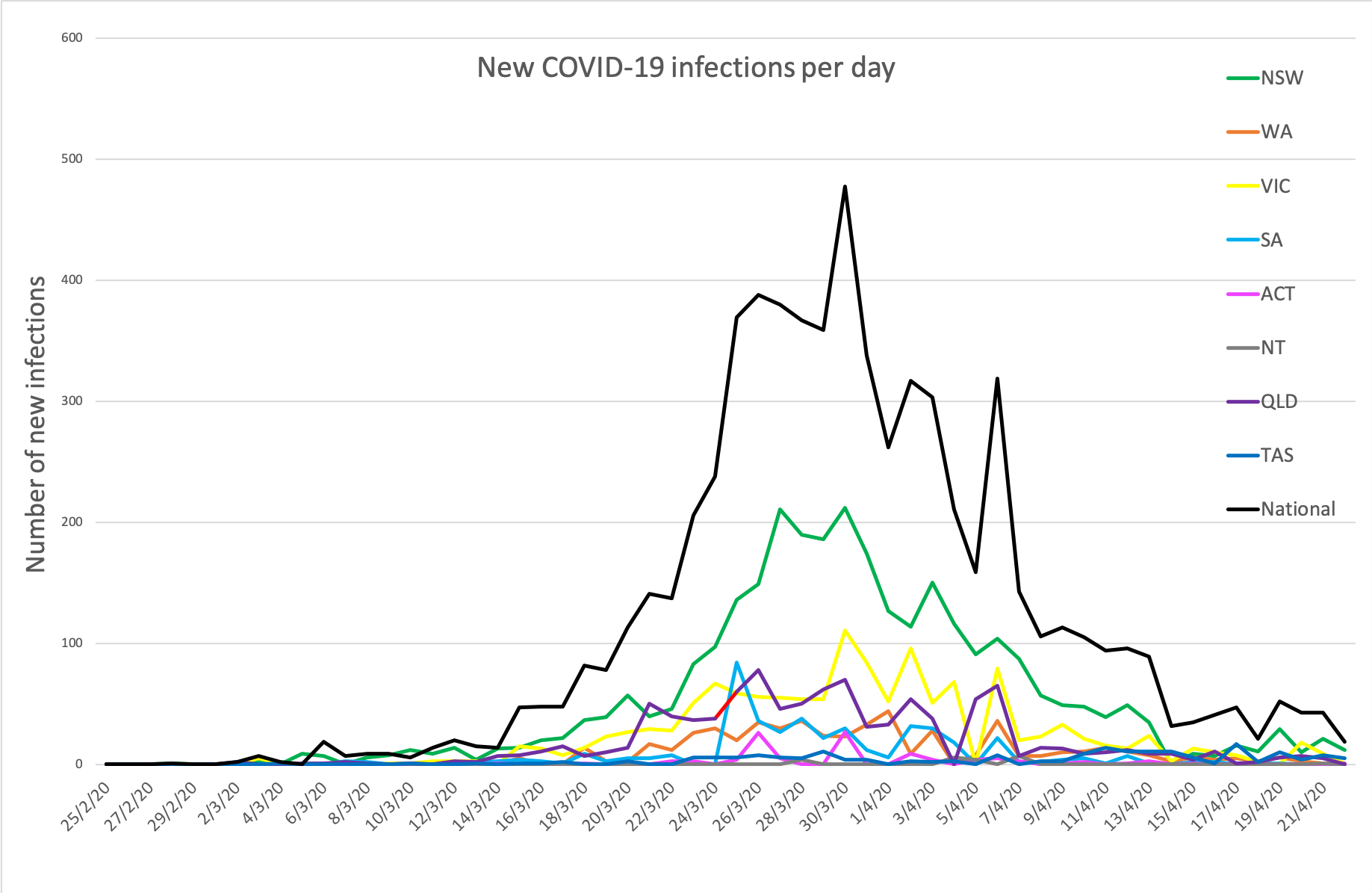The large majority of healthcare workers who have contracted COVID-19 have done so away from work, new MJA research shows
Thanks for joining us on The Medical Republic‘s COVID-19 live blog.
And a big thank you to our sponsor and supporter for funding this project with an independent grant, Boehringer Ingelheim.
The latest
- Telephone help line for elderly Australians struggling with isolation.
- Healthcare workers rarely contract COVID-19 from work, Australian data suggests.
- Chinese study suggests spread of COVID-19 through air-conditioning.
- Older Australians are not only at greater risk from COVID-19 infection, but isolation must be hitting many of them especially hard. Recognising this, the Federal Government has launched a free telephone support line focused on the mental health and wellbeing of elderly Australians, in partnership with Council on the Ageing Australia, National Seniors Australia, the Older Persons Advocacy Network and Dementia Australia.
The phone line will be staffed with trained advisers, and will be open Monday to Friday from 8am to 6pm (because no one gets depressed on weekends, apparently).
“I urge people to call this support line if they are feeling lonely or distressed, troubled or confused, or need to talk to someone about their concerns caring for a vulnerable person during the COVID-19 outbreak,” said Minister for Aged Care and Senior Australians, Richard Colbeck.
The number for the service is 1800 171 866.
- Most Australian healthcare workers with COVID-19 have not contracted it from work, say the authors of an article published in the Medical Journal of Australia.
Of 1160 symptomatic healthcare staff assessed at two dedicated COVID-19 screening clinics in Melbourne, 11 tested positive for the infection but eight of those had a history of travel or close contact with a COVID-19 case in the community. The other three had no obvious COVID-19 contacts in the workplace and at the time they were diagnosed, there were fewer than 10 COVID-19 patients at Royal Melbourne Hospital.
“These data indicate that COVID-19 is very uncommon in HCWs at present, and that the large majority of HCWs who have contracted COVID-19, have done so away from work,” the authors wrote. They also pointed out that there had been intensive training about appropriate PPE use, and that this offered ‘high-level protection’.
“This is by no means meant to trivialise the risk that frontline HCWs face, particularly when caring for unrecognised cases in whom PPE is not utilised,” they wrote.
- The TGA is undertaking a review of all the serology-based COVID-19 tests currently listed on the Australian Register of Therapeutic Goods. Manufacturers are being asked for more detailed information about their devices, as well as providing samples, and researchers from the Peter Doherty Institute have been engaged to do this post-market assessment.
The TGA said that using serology results to identify COVID-19 infection, particularly using rapid point-of-care tests, needed an understanding of the antibody response profile for the virus. There may be a high likelihood of a false negative during the early stages of infection, and some patients may also not develop antibodies at all.
There are already more than twenty COVID-19 antibody tests listed on the register, but the latest advice from the Royal College of Pathologists of Australasia is that serological tests should not be used to diagnose early COVID-19 infection. Their clinical use is also prohibited in South Australia and West Australia, and it is illegal to supply them for self-testing or home testing anywhere in Australia
12.10pm, 23 April
- Has the COVID-19 pandemic impacted your workload? Monash University is launching a study of how the pandemic is affecting the health and work of Australians, and they’re looking for people who have lost their job or had their work hours reduced. The study involves a 20-minute online survey now, and then again in one, three and six months’ time.
- A study of a restaurant-linked outbreak in China suggests the virus was spread via the air-conditioning system.
A research letter published in Emerging Infectious Diseases reports on an outbreak in which nine people from three families contracted the virus after eating at the same restaurant with the index patient, who had travelled with their family from Wuhan.
Researchers mapped out the seating positions of the affected people, and concluded that the spread couldn’t have happened by droplet spread alone because some of the infected were several metres away. But there was a strong airflow from the air-conditioner, which they proposed could have carried the virus from one table to the other two. No staff or other diners were infected.
However the authors did qualify their finding by pointing out that they didn’t do a simulation study to see if the air-conditioning could have spread particles that far.
- After months of studies where investigators nearly outnumber patients, some bigger studies are finally coming through, including this one from New York involving 5700 patients with COVID-19.
The study, published in JAMA, examined the presenting characteristics of 5700 patients – median age of 63 years, and nearly 40% were female – hospitalised in 12 facilities around New York City, using routine clinical data collected during their hospitalisation. However outcomes and clinical course data were only available for 2634 patients.
On admission, just over half the 5700 patients had hypertension, 41% were obese and one-third had diabetes. Nearly one-third of patients had a fever on admission, 17% had a respiratory rate above 24 breaths per minute, and 2% were co-infected with another respiratory virus. The study also noted that 13 patients (nearly 2%) had a negative first test for COVID-19 but a positive repeat test.
Among the 2634 patients who completed the study (by either dying or being discharged alive), 21% died, 14% were treated in intensive care, 12% were intubated and 3% received kidney dialysis. Among those who received mechanical ventilation, mortality rates were an alarming 88%.
- Here are the latest confirmed COVID-19 infection figures for Australia, to 3pm yesterday. A really positive achievement – which you can see in the bottom of these two charts – is that our total number of new infections in the past 24 hours is just two. This is the lowest since March 3.
National – 6,649 (up 2) and 74 deaths
ACT – 104
NSW – 2971
NT – 27
QLD – 1024
SA – 438
TAS – 203
VIC – 1336
WA – 546


Disclaimer: The content on the Medical Republic COVID-19 blog is independently created by Medical Republic without input from Boehringer Ingelheim Pty Ltd. The views, information, or opinions expressed on the Medical Republic COVID-19 blog are Medical Republic’s own and do not necessarily represent those of Boehringer Ingelheim Pty Ltd. Boehringer Ingelheim Pty Ltd is not responsible for and does not verify the accuracy of any content on the Medical Republic COVID-19 blog.


